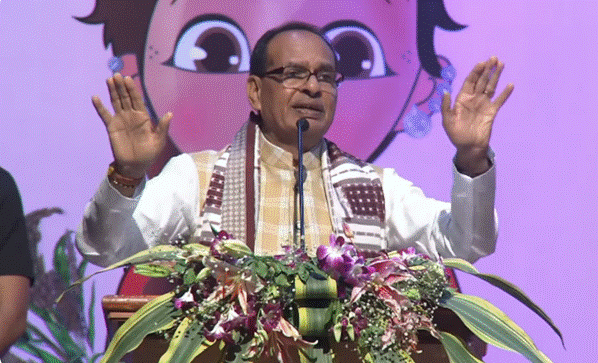Wednesday, 12 November 2025

In a resounding endorsement of Odisha’s millet movement, Union Minister of Agriculture and Farmers’ Welfare and Rural Development, Shivraj Singh Chouhan, inaugurated the “Mandia Dibasa” (Millet Day) celebrations at the Lok Seva Bhawan Convention Centre, Bhubaneswar. Lauding the state’s pioneering role, he remarked that Odisha has transformed the vision of Shree Anna into a living movement, setting an example for the entire nation.
“Mandia Dibasa is not merely a celebration—it is a people’s campaign for Shree Anna,” Chouhan said, commending the Odisha government for operationalizing what many others have only envisioned. He highlighted that millets represent more than a nutritious food—they embody sustainability, water conservation, and environmental stewardship. “Millets nourish both the body and the planet. Under Prime Minister Narendra Modi’s leadership, Shree Anna has gained global recognition,” he noted.
The Minister emphasized that awareness about the nutritional and ecological value of millets must extend beyond conferences and speeches. “We must engage directly with farmers, empower local communities, and build robust millet-based livelihoods,” he urged. He called upon agricultural scientists to advance research and innovation in millet processing technologies, identifying processing as the “most crucial link” in the millet value chain. Commending Odisha’s success in procuring millets at the Minimum Support Price (MSP), he said, “Odisha has shown the nation how to translate policy into practice.”
Chouhan further advocated for the inclusion of millets in school mid-day meal programmes and the establishment of millet outlets in all government departments. “Other states can learn from Odisha’s model. Agriculture cannot progress without women—and Odisha’s women farmers are leading this change from the front,” he added, applauding their leadership and contribution to the state’s agrarian transformation.
Welcoming dignitaries, Odisha Chief Minister Mohan Charan Majhi underscored that agriculture remains the backbone of the state’s economy. “Our farmer brothers and sisters, especially women, have made impressive strides through the Odisha Millet Mission,” he said. “Millets are not only rich in nutrients but also symbolize the cultural and ecological heritage of Odisha.” He credited the guidance of Prime Minister Narendra Modi for enabling the successful rollout of agricultural reforms that are benefiting millions of smallholders.
The event brought together a distinguished panel of policymakers, scientists, and international development leaders, including Kanak Vardhan Singh Deo, Deputy Chief Minister of Odisha; Dr. Yvonne Pinto, Director General of the International Rice Research Institute; Dr. Soumya Swaminathan, Former Chief Scientist, World Health Organization and Chairperson of the M.S. Swaminathan Research Foundation; Elisabeth Faure, Country Director, World Food Programme, India; Dr. Arabinda Kumar Padhee, Principal Secretary, Agriculture & Farmers’ Empowerment, Government of Odisha; and Shubham Saxena, Director, Agriculture & Farmers’ Empowerment.
Together, they reaffirmed Odisha’s position as the epicentre of India’s millet resurgence—a model that seamlessly integrates nutrition, sustainability, and farmer empowerment. As the global momentum for climate-smart crops grows, Mandia Dibasa 2025 stood as a celebration not only of Odisha’s heritage but also of its agricultural future.